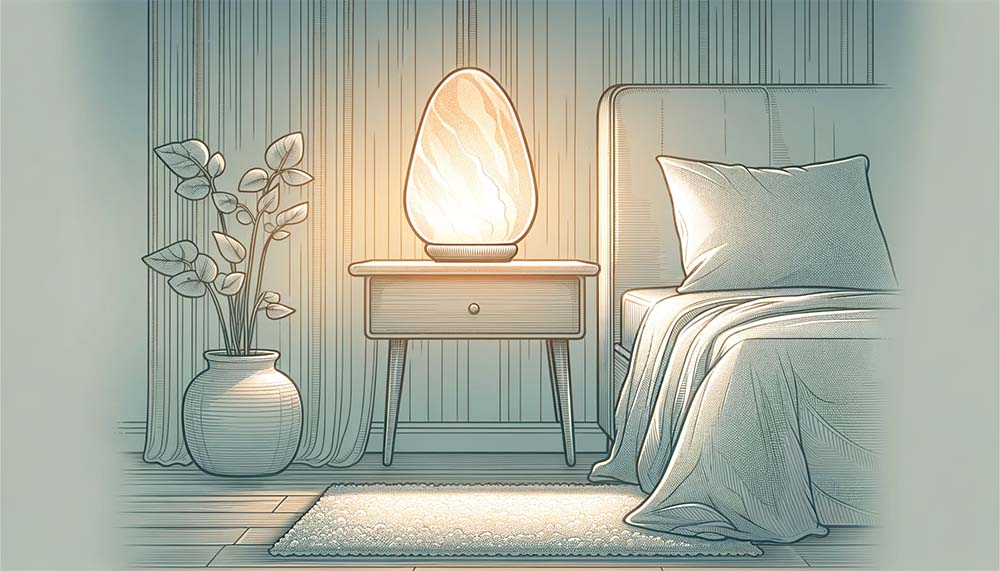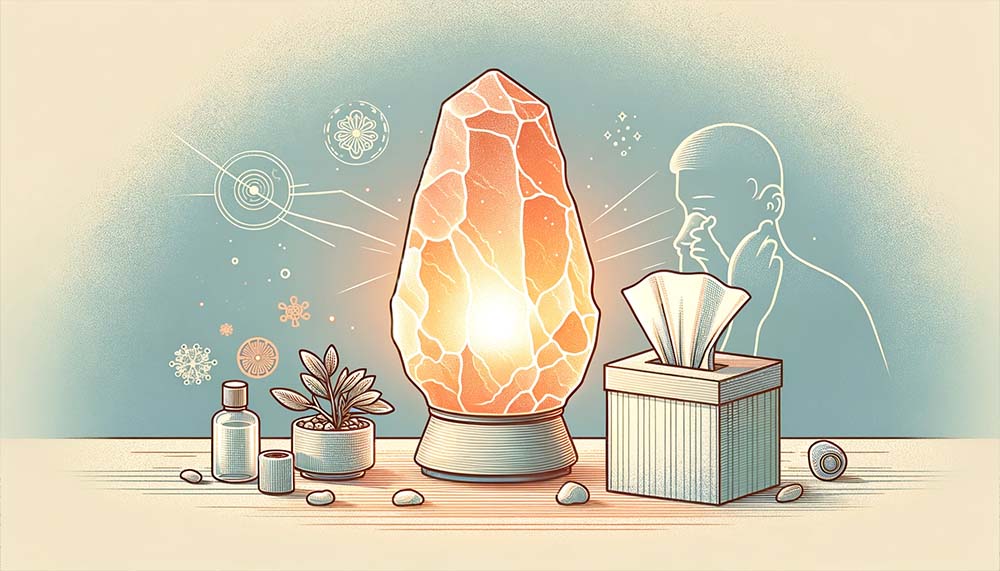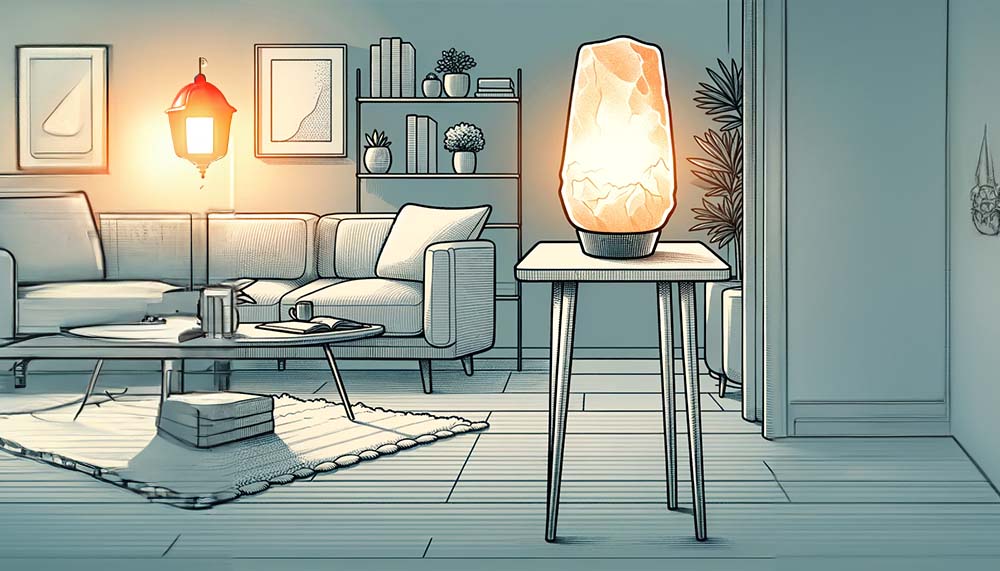Do you struggle with getting a good night’s sleep? You’re not alone. Many people are turning to Himalayan salt lamps as a natural solution to enhance sleep quality. These captivating lamps, carved from ancient salt crystals, are believed to offer a range of potential benefits that may help you achieve more restful and rejuvenating sleep.
In this article, we’ll explore how salt lamps may improve sleep through their soothing light, negative ion production, and air purification properties. We’ll also examine user experiences and anecdotal evidence from satisfied salt lamp owners who report better sleep quality and overall well-being.
Additionally, we’ll provide important considerations for incorporating salt lamps into your sleep environment and discuss complementary strategies for optimizing indoor air quality.
Join us as we dive headfirst into the world of salt lamps and discover whether they could be the key to unlocking the restorative sleep you’ve been dreaming of.
Potential Salt Lamp Benefits for Sleep
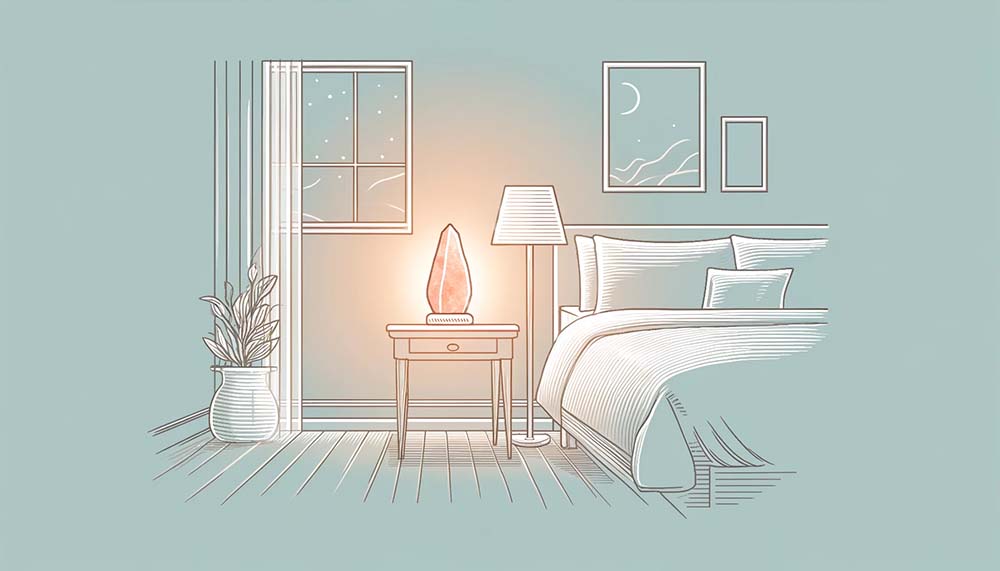
Relaxing and Soothing Color and Light
One potential way that salt lamps may help with sleep is through the relaxing and soothing color and light they emit. Salt lamps give off a warm, pinkish-orange glow that lacks the blue light wavelengths known to disrupt sleep hormones like melatonin.
Bright and blue-toned light, especially from electronic screens, can throw off your body’s internal sleep clock. The soft, reddish hues of a salt lamp, however, are less likely to interfere with your natural sleep cycle and may even help you wind down before bed.
Salt lamps come in a variety of colors, be sure to check out our guide on the different Himalayan salt lamp colors.
Negative Ion Production
Another proposed mechanism is that salt lamps may produce negative ions, which have been linked to reduced stress and improved mood in some studies.
A study conducted by the Bavarian State Office for Health and Food Safety in Germany found that salt lamps could slightly reduce the concentration of airborne particles in a controlled environment, potentially by producing negative ions (check out What are Negative Ions). However, the study also noted that the effect was minimal and that salt lamps should not be considered a replacement for proper ventilation and air filtration methods.
Negative ions are thought to increase the flow of oxygen to the brain, resulting in better sleep, but the research on the exact amount of negative ions produced by salt lamps and their direct sleep effects is still quite limited.
Air Purification
Finally, the hygroscopic properties of salt may allow the lamps to trap air pollutants like allergens and irritants that could disrupt sleep by causing congestion or breathing difficulties. By attracting water molecules that carry these contaminants, the salt lamp captures them on its surface, potentially cleaning the surrounding air. However, more studies are needed to determine how significantly this air filtration might improve sleep quality.
User Experiences and Anecdotal Evidence

Many salt lamp enthusiasts report positive experiences with using these Himalayan salt crystal lamps in their homes and workplaces. While scientific evidence on the benefits is limited, there are countless anecdotal accounts from satisfied users who feel salt lamps have improved their sleep quality, mood, breathing, and overall sense of well-being.
Some of the most commonly reported effects include falling asleep more easily and experiencing longer, deeper, more restful sleep when placing a salt lamp on a nightstand or near the bed. Users often attribute this to the soothing pinkish-orange glow that seems to induce relaxation compared to harsher artificial light. The lack of stimulating blue light frequencies may also support the body’s natural sleep rhythms.
Salt lamps may also help allergies and other respiratory sufferers frequently mention reductions in their symptoms and easier breathing, which they believe is a result of the air purifying effect of salt lamps attracting pollutants and allergens. Many also describe an uplifting, calming effect on their mood and stress levels, potentially due to negative ions released by the heated salt.
While individual experiences vary, with some feeling dramatic improvements quickly and others noticing more subtle benefits over time, the vast majority of authentic Himalayan salt lamp owners seem to appreciate and enjoy the ambiance these lamps provide. At a minimum, they are viewed as a beautiful natural accent that makes a space feel warmer, cozier and more relaxing to spend time in.
Considerations for Using Salt Lamps for Sleep
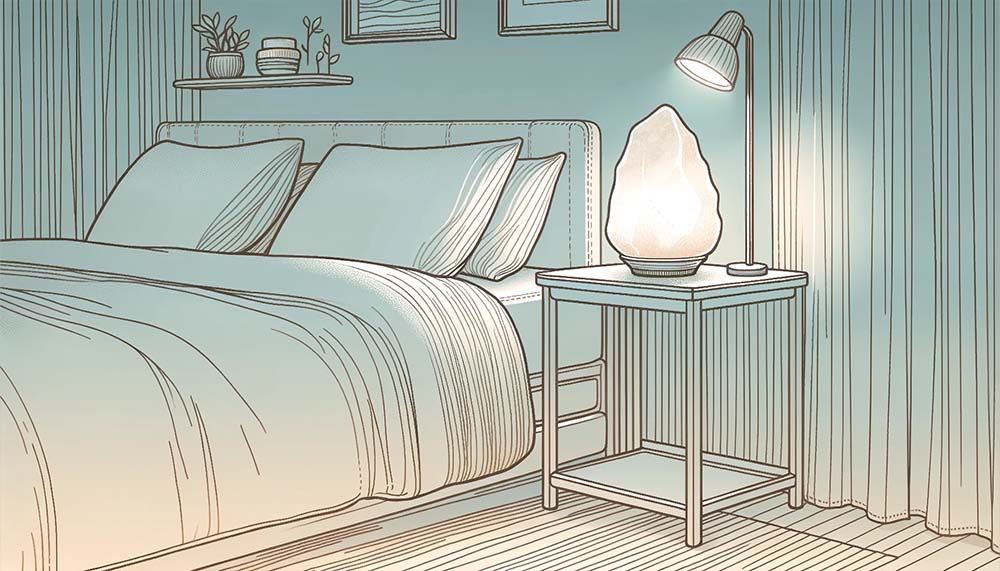
When incorporating a Himalayan salt lamp into your home, there are several important factors to keep in mind to ensure you get the most out of your lamp while maintaining its integrity and safety.
- First, be sure to choose an authentic, high-quality salt lamp sourced from the Khewra salt mines in Pakistan. Look for lamps with a distinctive pink or orange color, as pure Himalayan salt lamps should not be pure white or too uniform in color. If you’re unsure about the authenticity of a lamp, be sure to check out our roundup of the best salt lamp brands and lamps to ensure you get an authentic model.
- Next, consider the size of the room where you plan to place your salt lamp. For optimal benefits, it’s recommended to have one pound of salt lamp for every 10 square feet of space. Larger rooms may require multiple lamps strategically placed throughout the area.
- Proper placement is also key. Avoid putting your salt lamp in areas with high humidity, such as bathrooms or near kitchen stoves, as excess moisture can cause the salt to dissolve and the lamp to leak. Instead, opt for drier spaces like bedrooms, living rooms, or offices. Keep the lamp away from drafts and open windows as well.
- When it comes to care and maintenance, regular cleaning is a must. Gently dust the surface of your lamp with a soft, dry cloth to remove any debris. If your lamp becomes damp or wet, unplug it immediately and allow it to dry thoroughly before use. Over time, your salt lamp may develop a thin white powder on its surface due to the salt attracting moisture – this is normal and can be carefully wiped away. Check out our full salt lamp cleaning guide.
- Finally, always exercise caution and follow safety guidelines when using your salt lamp. Check that your lamp has a UL-certified cord and dimmer switch, and never leave it unattended or plugged in for extended periods. Keep the lamp out of reach of children and pets, as the salt can be harmful if ingested.
Alternatives and Complementary Strategies to Salt Lamps:
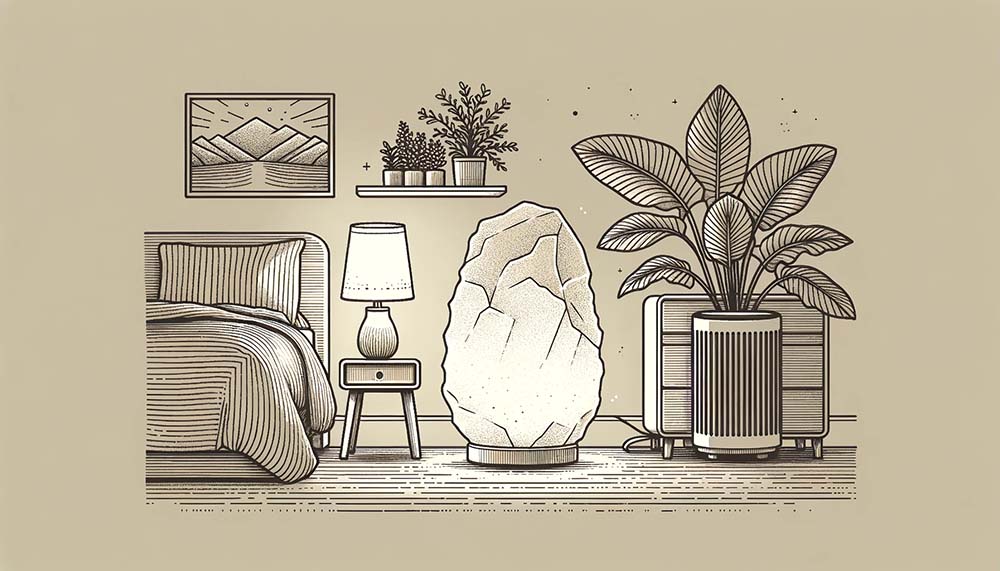
While Himalayan salt lamps can be a beautiful and soothing addition to your home decor, they should not be relied upon as the sole solution for improving indoor air quality. To create a truly healthy living environment with fresh, clean air, it’s important to incorporate a range of proven strategies and complementary techniques alongside your salt lamp.
Air Purifiers
One of the most effective ways to remove airborne pollutants and allergens is by using a high-quality air purifier. Look for models with true HEPA filters, which can capture particles as small as 0.3 microns with 99.97% efficiency. Air purifiers continuously cycle and filter the air in a room, providing a more robust and targeted approach to improving air quality compared to salt lamps alone.
For the most effective and reliable way to remove airborne contaminants and breathe cleaner, healthier air in your home, be sure to check out our list of the most reliable air purifiers models on the market, expertly selected by our team at Filtered Elements.
Regular Cleaning and Dusting
Maintaining a clean home is essential for reducing indoor air pollution. Regularly vacuum carpets and upholstery using a vacuum cleaner with a HEPA filter to trap dust, pet dander, and other allergens.
Don’t forget to dust surfaces like shelves, blinds, and ceiling fans where particles can accumulate.
Frequent cleaning helps minimize the amount of pollutants that can become airborne and circulate throughout your living space.
Proper Ventilation
Ensuring adequate ventilation is crucial for maintaining good indoor air quality. Open windows and doors when weather permits to allow fresh air to circulate and replace stale, polluted indoor air. Use exhaust fans in bathrooms and kitchens to remove excess moisture, odors, and cooking fumes. If you have a mechanical ventilation system, make sure it is properly maintained and functioning efficiently.
Air-Purifying Plants
In addition to being aesthetically pleasing, certain houseplants have been shown to naturally filter and purify indoor air.
Some of the best air-purifying plants include:
- Snake plants
- Spider plants
- Peace lilies
- Boston ferns
These plants absorb toxins like formaldehyde, benzene, and carbon monoxide through their leaves and roots, helping to create a cleaner, healthier living environment.
Final Thoughts
The quest for a good night’s sleep has led many to explore the potential benefits of Himalayan salt lamps. While scientific evidence supporting their direct impact on sleep quality is limited, the warm, soft glow and potential air-purifying properties of these lamps have captured the attention of those seeking a more restful slumber.
In the sections above, we covered the potential benefits of salt lamps, including their relaxing light, negative ion production, and air filtration capabilities. User experiences suggest that salt lamps may contribute to easier relaxation and deeper sleep for some individuals.
However, it’s important to view salt lamps as a complementary tool rather than a sole solution for improving sleep quality. Incorporating proven strategies like air purifiers, regular cleaning, and proper ventilation is crucial for creating a healthy sleep environment.
By combining the allure of salt lamps with established sleep-enhancing techniques, you can work towards achieving the rejuvenating rest you deserve.

